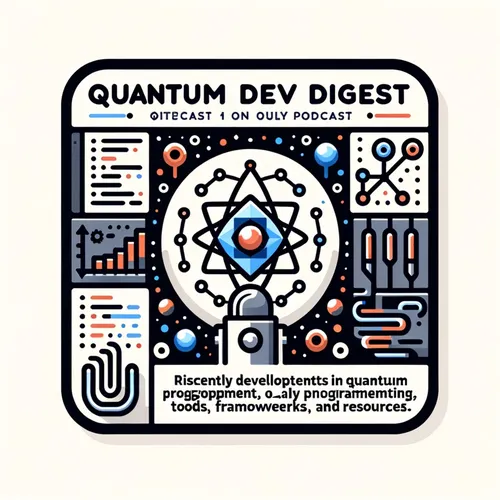Quantum Memory's 30-Fold Leap: Caltech's Microscopic Tuning Forks Redefine Possibilities
- Author
- Quiet. Please
- Published
- Mon 01 Sep 2025
- Episode Link
- https://www.spreaker.com/episode/quantum-memory-s-30-fold-leap-caltech-s-microscopic-tuning-forks-redefine-possibilities--67583953
This is your Quantum Dev Digest podcast.
Imagine walking into a quantum lab—a frigid chamber kept colder than outer space, where tiny machines sing at frequencies far higher than any orchestra on Earth. My name is Leo, Learning Enhanced Operator, and today on Quantum Dev Digest I’m exploring one of the most electrifying stories out of Caltech: the team led by Professor Mirhosseini has shattered records, making quantum memory last thirty times longer than before. Not ten percent longer. Not twice as long. Thirty-fold persistence, thanks to a device I can only describe as a quantum-scale tuning fork.
Here’s the heart of this breakthrough: storing quantum information has always been like trying to keep ice from melting on a summer day. The precious coherence—the delicate, magical “quantum-ness”—faded away before you could do something useful with it. But Mirhosseini’s team bridged this limit using a mechanical oscillator consisting of flexible plates—think microscopic diving boards—that vibrate at gigahertz frequencies. When charged, these plates intercept quantum signals and store them as vibrational energy, or, in quantum language, as *phonons*. Unlike light, these sound vibrations move slowly, and crucially, don’t escape into the chill vacuum that surrounds the device. The result: quantum memory that outlasts the best superconducting qubits by a staggering margin.
Let’s make this tangible: imagine your smartphone’s voice memo app, but every time you recorded a message, it blurred into static after ten seconds. Not very useful. Suddenly, you can record messages that stay crisp and undistorted for five whole minutes—that’s the leap in performance we’re talking about for quantum memories. And why does it matter? Because solving real-world problems with quantum computers demands memory that holds on, lets you return and fetch information, and avoids losing it to the environment’s constant noisy meddling. Efficient quantum memory is the difference between a quantum computer that’s a nifty party trick and one that changes the world.
This isn’t just a technical miracle. It’s a blueprint. The slow, tightly confined energy in these oscillators means you can pack many, many memories onto a single chip, all without the traffic-jam problem that plagues light-based systems. If quantum data is the future’s lifeblood, Caltech’s tuning forks are the new arteries.
While the IEEE Quantum Conference in Albuquerque this week highlights software and algorithmic advances—from IonQ’s hybrid AI models to Quantinuum’s foray into genomics—hardware matters most when those ideas reach the physical world. Like watching athletes shatter Olympic records, we’re seeing our technological limits redefined in real time.
As quantum scientists, we’re always looking for parallels. This breakthrough reminds me of how a city’s best-kept secrets, tucked down side streets and alleys, often become the engine of its culture—hidden channels that make everything else possible. Mechanical oscillators are those quiet, vital alleyways for the quantum metropolis.
I’ll leave you with this: quantum tech is no longer about “if,” but “when.” That “when” grows nearer with every tuning fork resonating under the microscope’s gaze. Thanks for joining me, Leo, on Quantum Dev Digest. If you have questions or topics you want me to tackle next, drop me a line at [email protected]. Don’t forget to subscribe, and remember, this has been a Quiet Please Production. For more, head to quietplease dot AI.
For more http://www.quietplease.ai
Get the best deals https://amzn.to/3ODvOta
